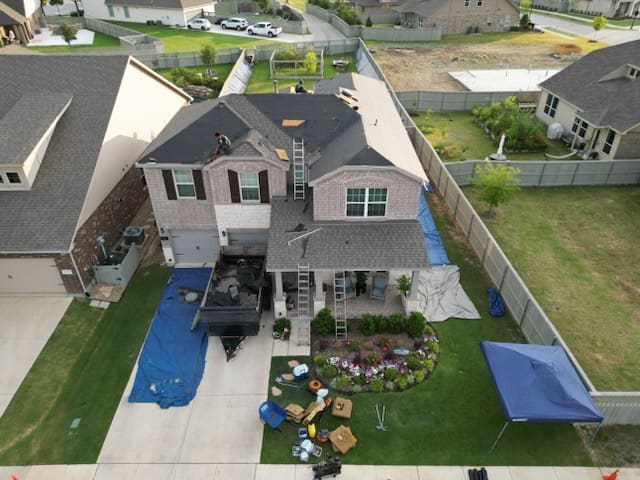Replacing a roof is a significant home improvement project that can be both exciting and daunting for homeowners. Understanding what to expect during the process can help alleviate some of the stress and ensure a smooth experience. This article will walk you through the roof replacement process, address common questions homeowners may have, and provide helpful tips on what to ask your roofer.
The Roof Replacement Process
1. Initial Inspection and Estimate
The first step in the roof replacement process is an initial inspection by a professional roofing contractor. During this inspection, the contractor will assess the condition of your current roof, measure its dimensions, and identify any underlying issues that need to be addressed. Based on this assessment, they will provide you with an estimate for the replacement, including the cost of materials and labor.
2. Selecting Roofing Materials
Once you have received an estimate, the next step is to select the roofing materials. There are various options available, including asphalt shingles, metal roofing, wood shakes, and clay tiles. Each material has its own advantages and disadvantages in terms of cost, durability, and aesthetics. Your contractor can help you choose the best material for your home based on your budget and preferences.
3. Delivery of Materials
Before the actual replacement begins, all necessary materials will be delivered to your home. This usually happens the day before or the morning of the project. The materials are typically unloaded on a paved surface near the roof access point to avoid damaging your lawn or landscaping.
4. Removing the Old Roof
The first major task in the replacement process is removing the old roofing materials. This involves tearing off the existing shingles, underlayment, and any damaged flashing. The debris is then deposited in a roll-off dumpster for disposal. A good roofing crew will use tarps to protect your home’s exterior and landscaping during this process.
5. Inspecting and Preparing the Roof Deck
After the old roof is removed, the roof deck is inspected for any damage. Any rotten or damaged plywood or rafters are repaired or replaced. This step is crucial to ensure a solid foundation for the new roof. The roof deck is then cleaned of any old nails and debris.
6. Installing Underlayment and Flashing
Next, a layer of roofing underlayment, such as asphalt roofing paper, is laid down over the roof deck. This provides an additional barrier against water penetration. Metal drip edging is installed around the roof’s edges, and new flashing is applied in areas prone to leaks, such as valleys, chimneys, and skylights.
7. Installing the New Roof
With the roof deck prepared, the new roofing materials are installed. The process typically starts with the installation of starter shingles along the edges, followed by the main shingles, which are laid in overlapping rows from the eaves to the peak. The ridge vent is installed at the roof’s peak to allow for proper ventilation.
8. Final Inspection and Cleanup
Once the new roof is installed, the contractor will conduct a final inspection to ensure everything is properly installed and sealed. They will also check for any missed debris or nails around your property. A reputable roofer will walk you through the completed work and address any questions or concerns you may have. The final step is to provide you with warranty information and collect the final payment.
Common Questions Homeowners May Have
How Long Does the Roof Replacement Process Take?
The duration of a roof replacement depends on several factors, including the size of your roof, the type of materials used, and the weather conditions. On average, an asphalt shingle roof can be replaced in one to two days, while more complex materials like slate or tile may take several days to a week.
What Time of Year is Best for Roof Replacement?
Late autumn and early spring are generally considered the best times for roof replacement due to milder weather conditions. Extreme temperatures in summer and winter can affect the installation process and the performance of adhesives and sealants.
Will My Homeowners’ Insurance Cover the Cost?
Homeowners’ insurance typically covers roof damage caused by extreme weather events, such as hail, storms, or fallen tree limbs. However, it usually does not cover replacement due to normal wear and tear or age. It’s important to check your policy and consult with your insurance provider to understand your coverage.
Can I Stay in My Home During the Replacement?
Yes, you can stay in your home during the roof replacement, but be prepared for some noise and disruption. The process involves heavy equipment and a crew working on your roof, which can be loud and inconvenient. If you have young children or pets, you may want to consider making alternative arrangements for their comfort and safety.
Helpful Tips: What to Ask Your Roofer
Choosing the right roofing contractor is crucial for a successful roof replacement. Here are some important questions to ask your roofer before hiring them:
1. Are You Licensed and Insured?
Ensure that the contractor is licensed to operate in your area and carries both general liability and workers’ compensation insurance. This protects you from any liability in case of accidents or damage during the project.
2. How Long Have You Been in Business?
Experience matters in roofing. A contractor with several years of experience is more likely to provide quality workmanship and handle any unexpected issues that may arise during the project.
3. Can You Provide References?
Ask for a list of references or previous clients you can contact. Speaking with past customers can give you insight into the contractor’s reliability, quality of work, and customer service.
4. What is Included in the Estimate?
Make sure the estimate includes a detailed breakdown of all costs, including materials, labor, permits, and any additional fees. This helps you avoid any surprises and ensures you understand what you are paying for.
5. What is Your Warranty Policy?
Inquire about the warranties offered for both the materials and the workmanship. A reputable contractor should provide a warranty that covers any defects or issues that may arise after the installation.
6. How Will You Protect My Property?
Ask how the contractor plans to protect your home’s exterior, landscaping, and gutters during the roof replacement. They should use tarps and other protective measures to minimize damage and clean up thoroughly after the project.
7. What is the Timeline for Completion?
Get a clear timeline for the project, including the start and completion dates. This helps you plan accordingly and ensures the contractor is committed to finishing the job on time.
8. How Will You Handle Inclement Weather?
Weather can be unpredictable, so it’s important to know how the contractor will handle any delays caused by rain or other adverse conditions. They should have a plan in place to protect your home and keep the project on track.
9. Who Will Be On-Site During the Project?
Find out who will be supervising the project and who your main point of contact will be. It’s important to have someone you can communicate with and who is responsible for overseeing the work.
10. What Steps Will You Take for Safety?
Safety is paramount in roofing projects. Ask about the safety measures the contractor will implement to protect their workers and your property. This includes the use of proper equipment, fall protection, and adherence to safety regulations.
Conclusion
Replacing your roof is a major investment, but with the right information and preparation, you can ensure a smooth and successful project. Understanding the roof replacement process, knowing what questions to ask your roofer, and being aware of common concerns can help you make informed decisions and achieve the best results for your home. If you have any further questions or need assistance with your roof replacement, don’t hesitate to contact a professional roofing contractor.

